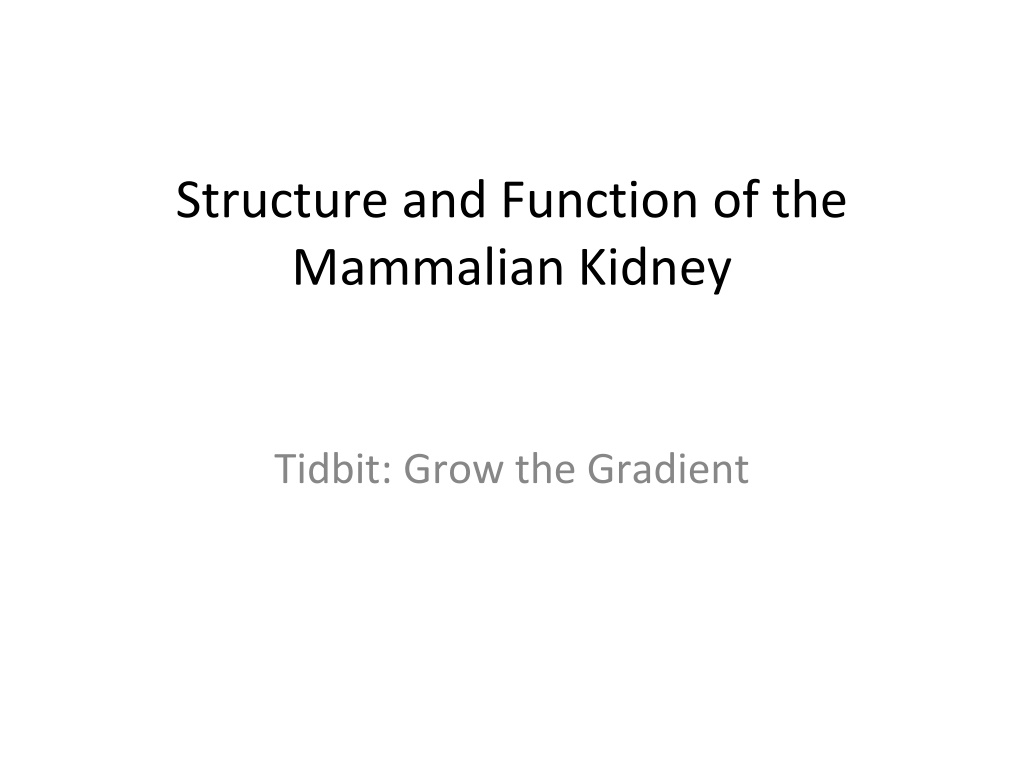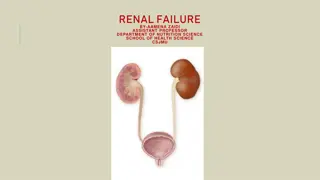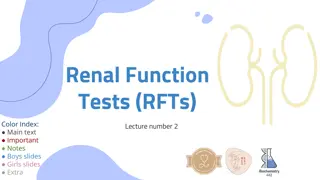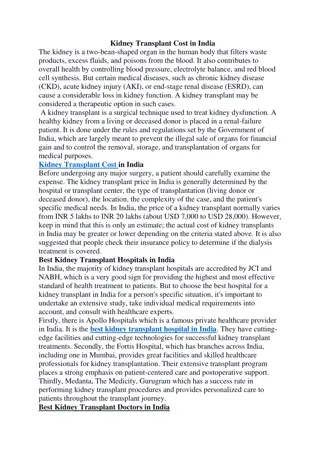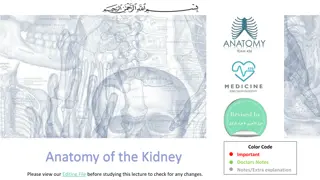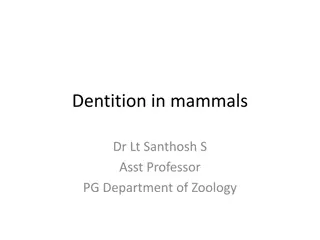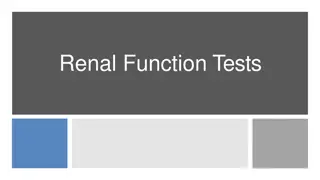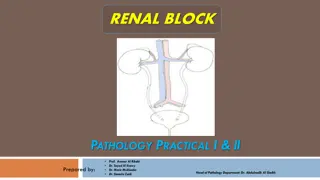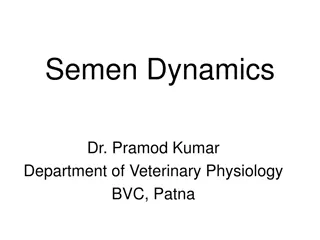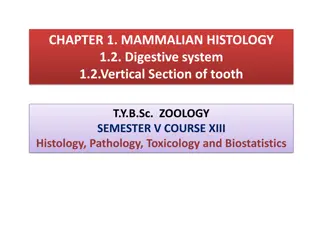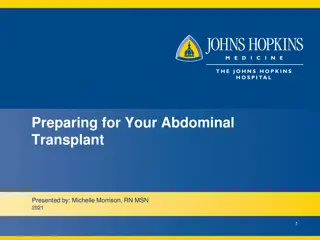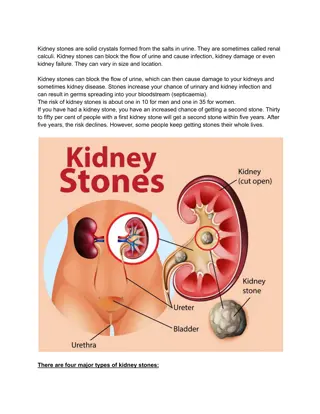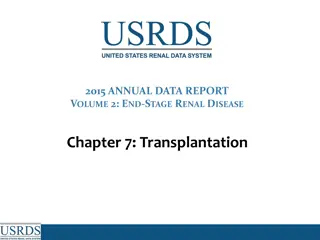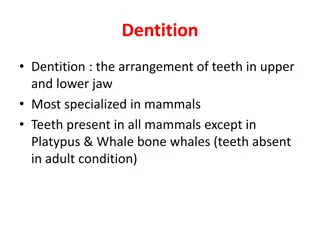Mammalian Kidney: Structure and Function Insights
Delve into the intricate workings of the mammalian kidney, exploring its diverse functions, membrane transport processes, and role in various habitats and diseases. Discover the fascinating mechanisms behind osmosis, active transport, and gradient maintenance.
Download Presentation

Please find below an Image/Link to download the presentation.
The content on the website is provided AS IS for your information and personal use only. It may not be sold, licensed, or shared on other websites without obtaining consent from the author.If you encounter any issues during the download, it is possible that the publisher has removed the file from their server.
You are allowed to download the files provided on this website for personal or commercial use, subject to the condition that they are used lawfully. All files are the property of their respective owners.
The content on the website is provided AS IS for your information and personal use only. It may not be sold, licensed, or shared on other websites without obtaining consent from the author.
E N D
Presentation Transcript
Structure and Function of the Mammalian Kidney Tidbit: Grow the Gradient
Context Intro Bio, Anatomy & Physiology, Toxicology, Pharmacology, any course covering the kidney 3, 50-minute sessions
Learning Goals Students will understand structure and function of the mammalian kidney and how membrane transport processes are intrinsically integrated with kidney function. Students will be able to associate the diversity in structure and function of the mammalian kidney in organisms that live in different habitats. Students will elucidate the role of mammalian kidney in disease and toxicology.
Learning Goals Students will understand structure and function of the mammalian kidney and how membrane transport processes are intrinsically integrated with kidney function. Students will be able to associate the diversity in structure and function of the mammalian kidney in organisms that live in different habitats. Students will elucidate the role of mammalian kidney in disease and toxicology.
and this Reabsorption: 100% Glucose Most salts No Urea Urea reabsorption here only Adds to medulla mosm/L Loop of Henle: Countercurrent Multiplier NaCl and water reabsorption Urine is more concentrated than blood
Learning Objectives Simulate the movement of water and sodium at each region of the Loop of Henle Associate osmosis and active transport with movement of water/solutes at each region of the Loop of Henle Discuss how the descending and ascending limbs of the tubules maintain a concentration gradient Predict the impact of the length of the Loop of Henle on the magnitude of the salt gradient Predict the length of the Loop of Henle in organisms from different habitats
Students already can: Define osmosis, active transport Label the parts of a kidney Label the parts of a nephron We know they can because
Pre-Assessment Online pre-class quiz OR Clicker questions at beginning of class
Pre-Assessment Questions to address: osmosis active transport
Macro-scale anatomy Kidney (one of a pair) Ureter (one of a pair) Urinary Bladder Urethra Fig. 12-3a, p. 228
renal cortex renal medulla Kidney anatomy renal artery renal vein renal pelvis renal capsule ureter
proximal tubule distal tubule Bowman s capsule Nephron anatomy KIDNEY CORTEX KIDNEY MEDULLA loop of Henle collecting duct
Final labeling question on pre-assessment Loop of Henle Interstitial fluid To distal tubule and collecting duct filtrate From proximal tubule Descending limb Ascending limb
Example of an Animation of Filtrate Flow and Membrane Transport Processes
Your game board looks like: Interstitial fluid To distal tubule and collecting duct filtrate From proximal tubule Descending limb: Water permeable only Ascending limb: Water IMpermeable Na Active Transport
Grow the Gradient Your team s job: Use appropriate transport processes to establish a concentration gradient in the kidney Follow along as we familiarize you with the rules. Check in at each stopping point to make sure you are on the right track.
Filtrate Pump Rule 1: Move Filtrate 1 space
Filtrate Pump Rule 1: Move 1 space; Rule 2: Check Diagram! 300 300 300 300 300 300 300 300 300 1
Membrane Transport: sodium and water Rules 3 and 4 400 200 400 400 200 400 400 200 400 Is there a gradient in the interstitial fluid? 1
Filtrate Pump Rules 1 and 2 300 200 300 400 200 400 400 400 400 2
Membrane Transport: sodium and water Rules 3 and 4 350 150 350 400 200 400 500 300 500 Is there a gradient in the interstitial fluid? 2
What would happen to the concentration gradient if you continued the game ? 350 150 350 400 200 400 500 300 500 2
Na gradient 300 600 1200
Loop of Henle and Water Conservation B. A. Predict which Loop of Henle, A or B, would establish the largest concentration gradient in the interstitial tissue?
Loop of Henle and Water Conservation ? B. A. Predict which Loop of Henle, A or B, belongs to a desert rat?
Other Post-Assessment Label the game board with: osmosis, sodium transport pump, direction of water and sodium movement Write a reflection Use strip sequence to order the steps that occur in the Loop of Henle
Diversity/Inclusion Group activity Students of different backgrounds, genders, experience, etc working together Peer peer instruction Facilitate learning in those that learn best in different modalities: reading, verbal, visual, kinesthetic
Learning Objectives Simulate the movement of water and sodium at each region of the Loop of Henle Associate osmosis and active transport with movement of water/solutes at each region of the Loop of Henle Discuss how the descending and ascending limbs of the tubules maintain a concentration gradient Predict the impact of the length of the Loop of Henle on the magnitude of the salt gradient Predict the length of the Loop of Henle in organisms from different habitats
Thank you! Nike and Christov Group 4 Group 7
